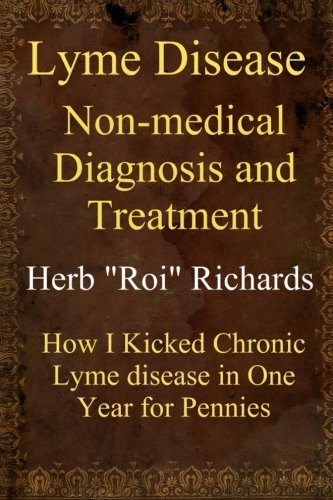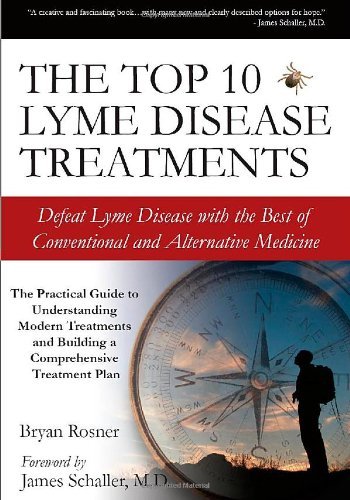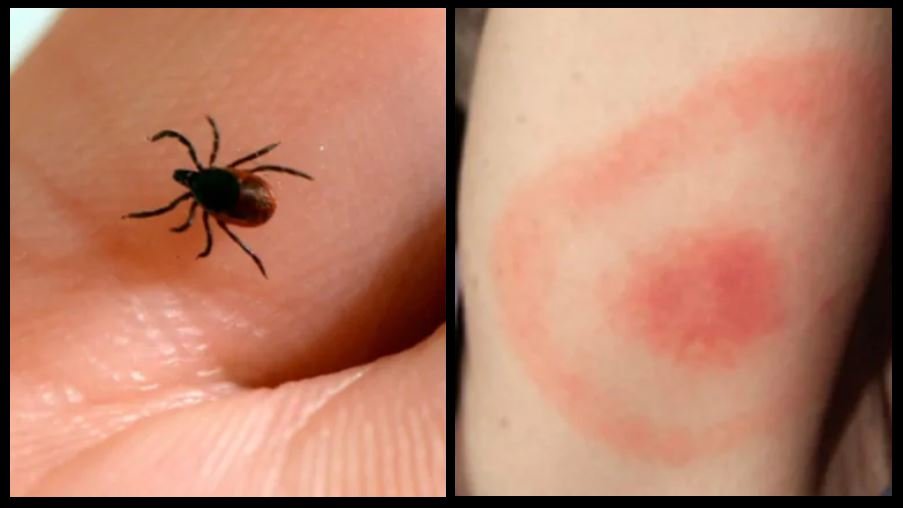What is Lyme disease?
According to the Center for Disease Control (CDC) Lyme disease is caused by the bacterium Borrelia burgdorferi and is transmitted to humans through the bite of infected blacklegged ticks.
Spread of Lyme disease by tick only accounts for ten percent of the 300,000 new cases of Lyme disease every year. So how are the rest of the 290,000 cases of Lyme disease contracted?
 According to Pamela Weintraub author of Cure Unknown: Inside the Lyme Epidemic, whose whole family came down with the disease says, Lyme disease is “one of the major epidemics of the 20th and 21st centuries.”
According to Pamela Weintraub author of Cure Unknown: Inside the Lyme Epidemic, whose whole family came down with the disease says, Lyme disease is “one of the major epidemics of the 20th and 21st centuries.”
Without resorting to suggesting there is a conspiracy, consider as author Herb Roi Richards states in his book, Lyme disease Non-Medical Diagnosis and Treatment, How I Kicked Chronic Lyme Disease In One Year for Pennies, Lyme disease is “highly contagious,” is easily spread one person to another and may be spread through the air for short distances,  and is “more contagious than Syphilis.”
and is “more contagious than Syphilis.”
It may have started with being spread by a tick bite, then possibly evolved into a contagion.
SYMPTOMS
Typical symptoms include fever, headache, fatigue, and a characteristic skin rash called erythema migrans. If left untreated, infection can spread to joints, the heart, and the nervous system.*
The symptoms among patients with Lyme disease are so vastly different, correct diagnosis is rarely ever made.
Abdominal pain or poor digestion
Arthritis-type conditions
Bladders, irritable or poor function
Blurry vision, sensitive to light
Bran fog
Breast pain, unexplained milk production
Concentration difficult
Cramps or pain in muscles
Ear pain, sensitive to sounds
Exaggerated symptoms, i.e., “worst ever…”
Eye inflammation
Flu-like symptoms
Forgetfulness
Getting lost, hard to find car in parking lot
Headache
Hear/feel cracking when turning neck
Heart problems, such as an irregular heartbeat
Joint & back stiffness
Knee or hip replacement
Lethargy
Liver inflammation
Loss of appetite
Mood swings, anger, depression
More sensitive to alcoholic drinks
Muscles twitching: especially in face
Nausea
Neck pain or stiffness
Occasional vertigo, poor balance
Pain or swelling in joints: Which ones?
Pelvic Pain or testicular pain
Pulse skips
Regularity changes – diarrhea, constipation
Sexual – loss of libido, dysfunction
Short term memory poor
Skin rash
Sleep disturbances – Wake early etc.
Sore ribs or pain in chest
Sore throat
Sudden need to lie down or sit
Suddenly unable to spell simple words
Swollen glands
Swollen lymph nodes
Swollen tissue, rashes, oozing fluid
Tingling in hands, feet, or back
Tiredness, lack of stamina, fatigue
Tremors
Unusual chills, fevers, sweats or flushing
Unusual hair loss
Unusual menstrual irregularity
Unusual weight loss or gain
With such a wide variety of symptoms, its no wonder patients with Lyme disease are the most misdiagnosed and mistreated.
DIAGNOSIS
Lyme disease is diagnosed based on symptoms, physical findings (e.g., rash), and the possibility of exposure to infected ticks.*
Pop star, Avril Lavine, cannot relate her story of being misdiagnosed with anything but Lyme disease without bursting into tears. This is just the tip of the iceberg for those who suffer from Lyme disease.
Relentless frustration, pain, and suffering from being misdiagnosed and treated for other diseases when the root cause is left to simmer, spread, and bring on an entirely new set of symptoms to diagnosed, ad infinitum.
There are a hundred diseases that Lyme disease patients are misdiagnosed with and treated for.
Alcohol addiction
Alzheimer’s disease
Amyotrophic lateral sclerosis (ALS)
Anorexia nervosa
Anti-Social Personality Disorder
Anxiety disorders
Asthma
Attention Deficit Hyperactivity Disorder (ADHD)
Autism
Bell’s palsy
Binge eating disorder
Bipolar disorder
Bulimia nervosa
Celiac disease
Cerebral Palsy
Chronic Fatigue Syndrome
Chronic inflammatory demyelinating polyneuropathy
Chronic peptic ulcer
Cirrhosis
Colitis
Congenital heart block
Crohn’s disease
Cyclothymic disorder
Dementia
Depression
Dermatitis herpetiformis
Diabetes
Dissociative identity disorder
Drug addiction
Early ALS
Early Alzheimer’s disease
Encephalitis
Endometriosis
Epilepsy
Fibromuscular dysplasia
Fibromyalgia
Fifth’s disease
Gastro esophageal Reflux disease
Graves’ disease
Guillain-Barre syndrome
Hashimoto’s thyroiditis
Hepatitis
Huntington’s disease
Hyperthyroidism
Infectious Cystis
Inflammatory bowel disease (IBD)
Irritable Bowel Syndrome (IBS)
Juvenile Arthritis
Kawasaki disease
Leukodystrophy
Lupus erythematosus
Ménière’s Syndrome
Menkes disease
Meningitis
Mixed connective tissue disease (MCTD)
Multiple personality disorder
Multiple Sclerosis (MS)
Muscular Dystrophy
Myasthenia gravis
Narcolepsy
Neurocognitive difficulties
New-onset fatigue
Obsessive-compulsive disorder
Ocular cicatricial pemphigoid
Optic neuritis
Osteoarthritis
Panic disorder
Paraneoplastic cerebellar degeneration (PCD)
Paranoid Personality Disorder
Parkinson’s disease
Pars planitis
Periodontitis
Peripheral neuropathy
Phobias
Post-traumatic stress disorder
Prostatitis
Psoriasis
Psoriatic Arthritis
Psychiatric disorders
Raynaud’s Syndrome
Reactive Arthritis
Restless legs syndrome (RLS)
Rheumatic fever
Rheumatoid arthritis
Schizophrenia
Scleroderma
Sexual dysfunction
Shingles
Sinusitis
Sjogren’s Syndrome
Sleep disorders
Social anxiety disorder
Thyroid disease
Tourette’s syndrome
Transient Ischemic Attack (TIA)
Tuberculosis
Ulcerative colitis (UC)
Vasculitis
Various other illnesses with confusing symptoms
Widespread pain
TREATMENT
Most cases of Lyme disease can be treated successfully with a few weeks of antibiotics.*
 You can successfully treat Lyme disease with antibiotics if you seek medical attention as soon as you’ve been bitten by a tick and have developed the bullseye rash, with is the best early detection and easiest positive diagnosis of having been exposed to Lyme disease.
You can successfully treat Lyme disease with antibiotics if you seek medical attention as soon as you’ve been bitten by a tick and have developed the bullseye rash, with is the best early detection and easiest positive diagnosis of having been exposed to Lyme disease.
Stephen Harrod Buhner, author of Healing Lyme, says, “up to 35 percent of those infected will not respond to treatment.” And adds that, “technological medicine is only partially effective.”
 Bryan Rosner, author of, The Top 10 Lyme Disease Treatments, says, “Lyme Disease is one of the most stubborn, treatment resistant infections on earth. It is also spreading rapidly on all continents.”
Bryan Rosner, author of, The Top 10 Lyme Disease Treatments, says, “Lyme Disease is one of the most stubborn, treatment resistant infections on earth. It is also spreading rapidly on all continents.”
There is hope for those seeking relief in Alternative Medicine.
Learn more
Want to learn more about what is Lyme disease?
Take our course for medical practitioners and laymen.
leadingedgeuniversity.org/lyme
Take the Course
Lyme Disease Alternative Medicine
For more information contact Leading Edge University or call (360) 748-4426
* = Source: CDC

